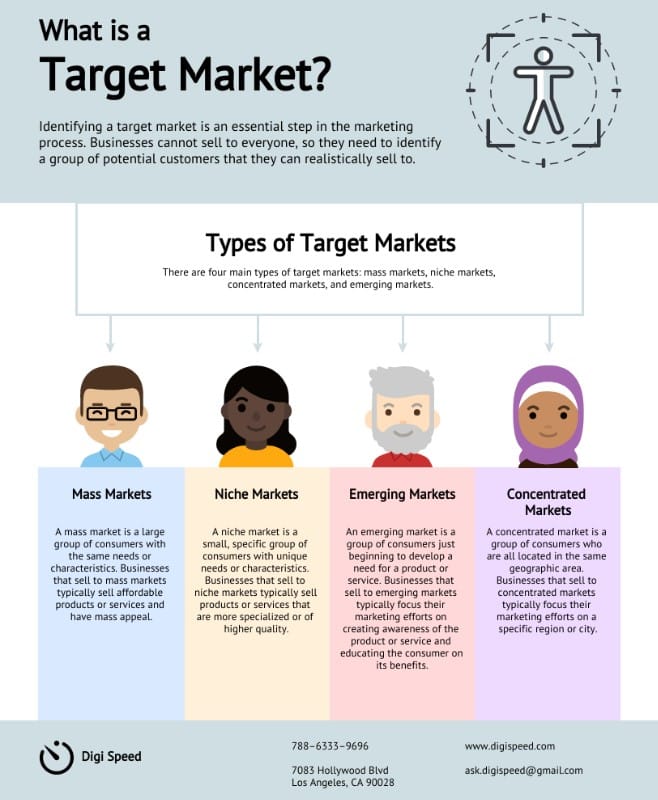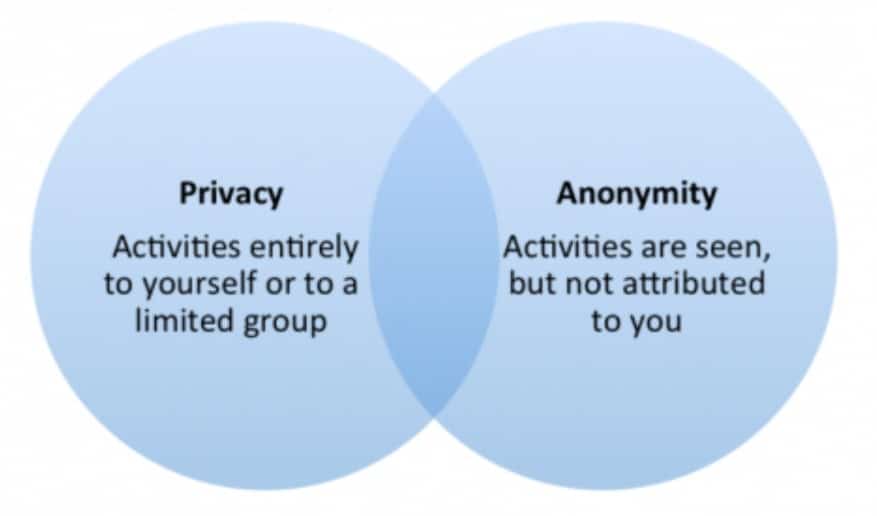Customer feedback surveys are invaluable tools for businesses seeking to understand their customers’ experiences and preferences. By collecting insights directly from your audience, you can make data-driven decisions that improve products, services, and overall satisfaction. However, to harness the full potential of these surveys, it’s crucial to follow best practices and utilize effective templates.
Best practices include designing surveys that are concise, clear, and relevant. Avoid overwhelming respondents with lengthy questionnaires and ensure questions are focused on gathering actionable feedback. Furthermore, employ a mix of question types, including multiple-choice, open-ended, and rating scales, to capture diverse insights.
Crafting an engaging introduction is paramount. Begin with a warm welcome and a brief explanation of the survey’s purpose, assuring respondents their feedback matters. Highlight the anonymity and confidentiality of their responses to encourage honest feedback.
This resource provides you with ready-to-use survey templates tailored to various industries and objectives, saving you time and effort. These templates can serve as a foundation for creating surveys that align with your specific goals, ensuring you collect meaningful zero-party data to enhance customer experiences and drive business success. Remember, continuous improvement through customer feedback is key to staying competitive in today’s market.

Here are some of the practices:
Clear Objectives
Clear objectives are the cornerstone of effective customer feedback surveys. They serve as the guiding light, directing your survey’s design, questions, and overall purpose. Here’s why defining clear objectives is a best practice in customer feedback surveys:
- Focus: Well-defined objectives help you stay focused on what you want to achieve with the survey. Whether it’s gauging customer satisfaction, identifying pain points, or assessing a new product’s reception, clarity ensures your efforts are purposeful.
- Relevance: Objectives ensure that your survey is relevant to your business goals. This alignment helps in collecting data that directly contributes to decision-making processes.
- Question Design: Clear objectives shape the questions you ask. They help you determine the type of questions to include and ensure they are structured in a way that elicits meaningful responses.
- Data Analysis: When objectives are well-defined, data analysis becomes more straightforward. You can categorize responses and measure them against your objectives to draw actionable insights that can ultimately inform your entire product discovery process.
- Efficiency: Clear objectives prevent the inclusion of extraneous or redundant questions, making the survey shorter and more efficient. This encourages higher response rates and reduces respondent fatigue.
- Communication: Transparency about survey objectives fosters trust with respondents. When participants understand the survey’s purpose, they are more likely to provide honest and relevant feedback.
- Benchmarking: With clear objectives, you can establish benchmarks for future surveys. This allows you to track progress over time and assess the impact of changes or improvements.
Incorporate these best practices by clearly defining your survey objectives right from the outset. Ensure your objectives are specific, measurable, achievable, relevant, and time-bound (SMART), and use them as a guide throughout the survey creation process to maximize the effectiveness of your customer feedback surveys and build customer loyalty.
Target Audience
Selecting the right target audience is a crucial best practice in customer feedback surveys, as it directly impacts the relevance and accuracy of the feedback collected. Here’s why identifying the target audience is essential:
- Precision: Identifying a specific target audience ensures that the survey questions are tailored to the group of customers or users who are most relevant to the survey’s purpose. This precision enhances the quality of the data collected.
- Relevance: Customers vary in their needs, preferences, and experiences. Targeting a particular audience allows you to ask questions that are directly relevant to their interactions with your products or services, increasing the likelihood of valuable insights.
- Personalization: Much like mass email marketing campaigns, which you might be familiar with, personalized surveys resonate better with respondents. When the survey is designed with a specific audience in mind, it demonstrates that you understand their unique circumstances and concerns, which can lead to higher response rates.
- Efficiency: Targeting reduces the risk of sending surveys to individuals who have no relevant experience with your offerings. This improves the efficiency of your data collection process.
- Segmentation: Segmenting your customer base allows you to analyze feedback by different groups, such as demographics, purchase history, or location. This enables more nuanced insights and can inform targeted marketing efforts.
To implement this best practice, start by defining your ideal survey audience based on your objectives. This can be done through social media newsletters, but to do this it is important to understand how to engage with customers on social media. Consider factors like customer type, behavior, or purchase history. Then, use this information to tailor the survey questions and distribution channels to effectively reach and engage your target audience. By doing so, you’ll maximize the utility of your customer feedback surveys and make data-driven decisions that benefit both your customers and your business.

Survey Length
Optimal survey length is a critical best practice in customer feedback surveys. Striking the right balance between gathering valuable insights and respecting respondents’ time is essential for survey success. Here’s why survey length matters and some best practices to follow:
- Engagement: Lengthy surveys can overwhelm respondents and lead to survey fatigue, reducing their willingness to participate. Shorter surveys are more likely to maintain engagement and result in higher completion rates.
- Quality Responses: Shorter surveys encourage more focused and thoughtful responses. Respondents are less likely to rush through questions, leading to more accurate and meaningful feedback.
- Time Efficiency: Respect for respondents’ time is essential. A well-structured, concise survey shows that you value their input and are considerate of their busy schedules.
- Higher Response Rates: Short surveys are more likely to attract participation. People are more willing to spend a few minutes on a quick survey compared to a lengthy one, leading to a larger and more diverse pool of responses.
- Clear Objectives: Shorter surveys force you to prioritize questions that align with your survey’s objectives, ensuring that you collect only the most relevant data.
To adhere to this best practice, keep your surveys focused and concise. Eliminate redundant or unnecessary questions, use clear and straightforward language, and aim for surveys that can be completed in 5-10 minutes. If you have more topics to cover, consider using multiple shorter surveys over time rather than one lengthy questionnaire. This approach ensures that you maximize data quality and respondent engagement while respecting their time constraints.
Question Types
Selecting the right question types is a crucial aspect of designing effective customer feedback surveys. The choice of question format influences the quality and depth of the feedback you collect. Here are some best practices for using different question types in customer feedback surveys:
- Multiple Choice Questions: These provide structured responses and are easy to analyze. Use them when you want to gather specific information, such as product preferences or demographics. Be sure to include an “Other” option to capture unexpected responses.
- Rating Scales: Rating scale questions, like Likert scales, help measure attitudes and opinions. They’re useful for assessing customer satisfaction, product quality, and the overall customer experience. Make sure the scale is balanced and includes a clear midpoint.
- Open-Ended Questions: These encourage detailed, qualitative responses. Use them to uncover insights, opinions, and suggestions. Keep these questions focused and ask for specific examples when necessary.
- Yes/No Questions: Useful for straightforward, binary inquiries. Keep them simple and avoid double-barreled questions that combine multiple issues into one.
- Semantic Differential Scales: These allow respondents to rate concepts along opposite adjectives (e.g., efficient/inefficient). They provide nuanced insights into customer perceptions.
- Ranking Questions: Ideal for prioritizing items or features. Ask respondents to rank a list of options based on their preferences, which can help you determine what matters most to them.
- Matrix Questions: These streamline data collection by presenting multiple similar questions in a grid format. Use them for efficient assessments of various attributes, but be cautious of overwhelming respondents with too many items.
- Demographic Questions: Collect essential demographic data like age, gender, income, or location to segment and analyze responses effectively.
To leverage these question types effectively, ensure that they align with your survey objectives. Mix different types to capture both quantitative and qualitative data, but keep the survey’s length and complexity in check to maintain respondent engagement and the quality of feedback. Customized survey templates often include a variety of these question types to help you get started efficiently.
Avoid Leading Questions
Avoiding leading questions is a fundamental best practice in designing customer feedback surveys to ensure the accuracy and reliability of the responses. Leading questions can unintentionally bias or manipulate respondents’ opinions. Here’s why it’s crucial and how templates can help:
- Objective Responses: Leading questions can skew responses, leading to inaccurate data. Templates often provide pre-structured questions that have been carefully crafted to be neutral and unbiased, reducing the risk of leading questions.
- Honest Feedback: To obtain honest and impartial feedback from customers, it’s essential to frame questions neutrally. Templates can serve as a guide, offering professionally phrased questions that adhere to best practices in survey design.
- Data Quality: Leading questions compromise data quality and can lead to incorrect conclusions. Using templates with proven question formats helps maintain the integrity of the survey data.
- Perception of Fairness: A survey that avoids leading questions is perceived as fair by respondents. This encourages participation and increases the likelihood of receiving genuine feedback.
- Improved Decision-Making: Unbiased data from surveys informs better decision-making. Templates, when designed by experts, typically include questions vetted for neutrality, supporting more accurate insights.
When using templates for customer feedback surveys, review and customize the questions to ensure they align precisely with your objectives and your unique customer base. Be vigilant in avoiding leading language, suggestive phrasing, or assumptions that might predispose respondents to specific answers. Templates are valuable starting points, but customization is key to crafting surveys that elicit impartial and constructive feedback from your customers.
Anonymity and Privacy
Anonymity and privacy are critical considerations in customer feedback surveys, as they directly impact response rates and the quality of feedback obtained. Here are best practices for ensuring anonymity and privacy, along with how templates can assist:
- Assure Anonymity: Clearly communicate to respondents that their responses are anonymous and will be kept confidential. This fosters trust and encourages honest feedback.
- Minimal Personal Data: Collect only essential demographic information, ensuring that sensitive personal data like names, addresses, or contact details are not linked to respondents’ responses. Templates often include guidelines for collecting minimal personal data.
- Data Encryption: Ensure that data collected through surveys is stored and transmitted securely. Many survey software templates come with built-in security features to protect respondent information.
- Opt-Out Option: Include an option for respondents to skip questions they are uncomfortable answering. Templates often provide a structured format for incorporating these options.
- Data Access Control: Limit access to survey data to authorized personnel only. Templates may offer features for role-based access control to maintain data privacy.
- Legal Compliance: Adhere to relevant data protection laws, such as GDPR or CCPA, when collecting and storing customer data. Templates can include compliant consent forms and disclaimers.
- Data Retention Policies: Clearly define how long survey data will be retained and for what purposes. Templates can provide guidance on creating data retention policies.
- Template Features: Survey templates designed by reputable providers often come with privacy and security features built-in, making it easier to adhere to best practices without extensive customization.
By incorporating these best practices into your customer feedback surveys and leveraging templates that prioritize anonymity and privacy, you can not only encourage greater participation but also establish a respectful and trustworthy relationship with your customers, leading to more candid and valuable feedback.

Pilot Testing
Pilot testing is a crucial step in the development of customer feedback surveys. It involves pre-testing the survey with a small group of respondents to identify and rectify any issues before launching it to a broader audience. Here are best practices for conducting pilot testing, along with insights on how templates can facilitate this process:
- Select a Diverse Sample: Choose a diverse group of individuals representing your target audience to participate in the pilot test. This ensures that the survey works effectively for various demographics.
- Simulate Real Conditions: Replicate the actual survey environment as closely as possible during the pilot test. Use the same survey distribution method and devices that respondents will use.
- Evaluate Clarity: Assess the clarity of survey instructions and questions. Ensure that respondents understand the questions and that there are no ambiguities.
- Identify Technical Issues: Check for technical glitches or compatibility problems with the survey platform or software. Ensure that the survey functions smoothly on different devices and browsers.
- Gauge Completion Time: Measure how long it takes for participants to complete the survey. This helps ensure that the survey is not overly time-consuming.
- Collect Feedback: Solicit feedback from pilot participants regarding the survey’s overall experience, including the question format, flow, and any challenges encountered.
- Refine the Survey: Use the insights gathered during pilot testing to make necessary adjustments to the survey. Modify questions, instructions, or survey flow as needed to enhance the user experience.
- Iterative Process: Pilot testing should be an iterative process. Make changes, conduct subsequent tests if required, and continue refining the survey until it is optimized for launch.
Templates for customer feedback surveys often come with built-in guidance for pilot testing. They provide a structured starting point for creating your survey, saving time and effort. However, it’s essential to customize the template based on pilot test feedback to ensure that the final survey is well-suited to your specific audience and objectives.
Timing
The timing of customer feedback surveys plays a critical role in their effectiveness. Best practices for timing can significantly impact response rates and the quality of feedback obtained.
Take Airbnb as an example: Airbnb hosts can use this feedback not only to refine their current guest experiences but also to adapt and tailor their offerings to meet evolving guest preferences. By analyzing the feedback collected at various stages of a guest’s stay, hosts can identify trends and areas for improvement, allowing them to stay competitive in the dynamic vacation rental market.
Here are key considerations and how templates can help:
- Post-Interaction Timing: Send surveys shortly after a customer interaction or transaction, such as a purchase or customer support interaction. Fresh experiences are more likely to be accurately recalled, leading to more valuable feedback.
- Avoid Survey Fatigue: Be mindful of not overloading customers with surveys. Consider their overall interaction frequency and ensure you’re not sending surveys too frequently, which can lead to survey fatigue and decreased response rates.
- Seasonal Relevance: Tailor the timing of your surveys to match seasonal or cyclical trends in your business. For example, a retailer might send satisfaction surveys after the holiday shopping season.
- Event-Based Surveys: Use templates for event-specific surveys (e.g., after a webinar, conference, or product launch) to gather feedback while the event is fresh in participants’ minds.
- Ongoing Feedback: Implement ongoing surveys, such as Net Promoter Score (NPS) or Customer Satisfaction (CSAT) surveys, to continuously monitor customer sentiment. By outsourcing live chat services it is easy to offer feedback on how they feel about your brand.
- Automated Triggers: Templates often come with features for automated survey triggers, allowing you to send surveys based on predefined events or actions, ensuring timely feedback collection.
- Regular Reviews: Periodically review and adjust the timing of your surveys based on feedback response rates and trends to optimize your approach continually.
Templates can streamline the process by offering pre-designed survey formats and automated scheduling features. However, it’s essential to customize the timing based on your specific business needs and customer behavior to maximize the relevance and impact of your customer feedback surveys.
Mobile Optimization
Mobile optimization is a critical best practice when designing customer feedback surveys in today’s digital landscape. With a significant portion of survey respondents using smartphones and tablets, ensuring a seamless mobile experience is essential. Here are key considerations and how templates can assist:
Responsive Design: Opt for survey templates that feature responsive design elements. This ensures that the survey adjusts to different screen sizes, providing an optimal user experience on mobile devices.
- Mobile-Friendly Question Formats: Templates should include question formats that work well on mobile screens, such as single-choice questions with large buttons, easy-to-tap checkboxes, and legible font sizes.
- Concise and Scannable: Mobile users have limited attention spans. Craft surveys with concise and scannable content to keep respondents engaged. Templates can provide guidance on question length and formatting.
- Testing Across Devices: Before launching the survey, conduct thorough testing on various mobile devices and browsers to identify and rectify any compatibility issues.
- Clear Navigation: Ensure easy navigation within the survey, with visible progress indicators and intuitive buttons. Templates often come with standardized navigation features for consistency.
- Minimize Load Times: Optimize survey templates and content to minimize load times on mobile networks. Large images and complex elements can deter mobile users.
- Touch-Friendly: Templates should prioritize touch-friendly design, ensuring buttons and response options are large enough to be easily tapped.
- Preview Mode: Templates may include a preview mode that allows you to simulate the survey experience on a mobile device, helping you identify and address potential issues.
To execute these best practices effectively, consider whether it’s beneficial to hire a dedicated remote team with expertise in mobile survey design and optimization.
By utilizing mobile-optimized survey templates and adhering to these best practices, you can ensure that your customer feedback surveys are accessible and user-friendly across a variety of devices, leading to higher response rates and more accurate feedback from your mobile-savvy customers.
Templates
Templates are valuable tools for creating effective customer feedback surveys. They offer a structured framework that streamlines the survey creation process and ensures best practices are followed. Here’s why templates are essential and some best practices for using them:
- Efficiency: Templates save time and effort by providing pre-designed survey formats, questions, and response options. This enables you to quickly create surveys without starting from scratch.
- Consistency: Templates ensure consistency in survey design, question formatting, and branding across multiple surveys. This consistency enhances the professional appearance of your surveys.
- Best Practices: Many templates are designed by experts who incorporate best practices in survey design, including question types, wording, and ordering, to maximize response rates and data quality.
- Customization: Templates can be customized to align with your specific objectives, target audience, and branding. This flexibility allows you to create surveys tailored to your unique needs.
- Data Analysis: Some templates come with built-in features for data analysis and visualization, simplifying the process of deriving insights from survey responses.
- Security and Compliance: Reputable survey software templates often include built-in security and compliance features to protect respondent data and adhere to privacy regulations.
- Accessibility: Templates can incorporate features for mobile optimization and accessibility, ensuring that your surveys reach a wide audience.
To make the most of templates, customize them to align with your survey goals, review and refine the questions to suit your specific audience, and ensure that they comply with data privacy regulations. By combining the convenience of templates with thoughtful customization, you can create customer feedback surveys that are not only efficient but also effective in gathering valuable insights to enhance your products, services, and customer experiences.








